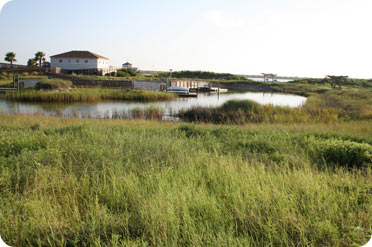As nicknames go, “kidneys of the coast” isn’t the most appetizing. And when you consider that it applies to places like swamps, bogs, and marshes, it’s even less appealing. Yet these areas really are important to the health of coastal regions. Known as coastal wetlands, they purify the water, control erosion, and offer habitat for hundreds of species of life.
 Wetland at the Marine Science Institute, Port Aransas, Texas. Credit: Carolyn Rose, UTMSI
Wetland at the Marine Science Institute, Port Aransas, Texas. Credit: Carolyn Rose, UTMSIWetlands are a transition zone between the oceans and the land. In addition to swamps and marshes, they include mangrove forests and other habitats. They’re filled with hardy plants that can survive high salinity, low oxygen levels, and other extreme conditions. And they provide habitat for fish, shellfish, migrating birds, and many other creatures.
The wetlands are a vital part of the coastal ecosystem. They filter water before it enters rivers or aquifers, control erosion, and they can blunt the impact of tropical storms.
Here in the United States, the largest coastal wetlands are found in the Mississippi River delta in Louisiana, but thousands of acres are disappearing each year.
Dams and levees along the Mississippi, for example, have reduced the amount of sediments the river deposits as it empties into the Gulf of Mexico. Agriculture, development, and other human activities are also carving away the wetlands. And a rising sea level is claiming still more.
A recent study suggested that most of America’s wetlands could disappear over the next century. And just like a person, a coast that loses its kidneys is in bad shape.

